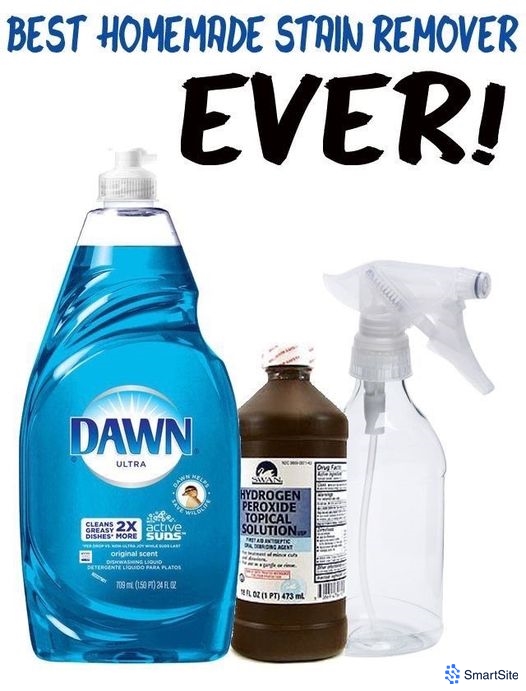The Ultimate Stain Remover That Actually Works On A Seriously Set In Stain ! Never Buy Oxyclean Again

- Mix the Ingredients: Combine the Blue Dawn dishwashing liquid, baking soda, and hydrogen peroxide in a bowl. Stir until the mixture is well blended and smooth.
- Prepare the Stain: Take the stained garment and pour 1 cup of warm water directly onto the stains. This helps to loosen the stain and prepare it for the treatment.
- Apply the Mixture: Gently agitate the mixture onto the stained area using a toothbrush. This method allows the mixture to penetrate the fabric fibers and break down the stain.
- Let It Sit: Allow the mixture to sit on the stain for at least 1 hour. This gives it time to work its magic.
- Wash and Iron: After the mixture has set, wash the garment as usual and iron if necessary. The stain should be significantly reduced or completely gone.
Different Stain Types and How to Handle Them
Understanding the nature of different stains can help in selecting the best removal method. Here are a few common stain types and natural solutions to tackle them:
1. Oil-Based Stains:
- Example: Grease, butter, and salad dressing.
- Solution: Sprinkle baking soda or cornstarch on the stain to absorb the oil. Let it sit for 15 minutes, then brush off the powder and wash with a natural detergent.
2. Protein-Based Stains:
- Example: Blood, sweat, and milk.
- Solution: Rinse the stain with cold water and apply a mixture of hydrogen peroxide and baking soda. Let it sit for 30 minutes before washing.
3. Tannin-Based Stains:
- Example: Coffee, tea, and wine.
- Solution: Blot the stain with a cloth soaked in vinegar or lemon juice. Follow up with a paste made of baking soda and water, then wash as usual.
4. Dye Stains:
- Example: Ink, grass, and food coloring.
- Solution: Apply rubbing alcohol to the stain, blotting gently until the stain lifts. Rinse with cold water and wash with a natural detergent.
Benefits of Using Natural Stain Removers
- Safe for Sensitive Skin: Natural ingredients are less likely to cause skin irritation or allergic reactions.
- Environmentally Friendly: Organic and DIY solutions reduce the use of harsh chemicals, benefiting the environment.
- Cost-Effective: Most natural stain removers use common household items, making them more affordable than commercial products.
Conclusion
Stains are an inevitable part of life, but they don’t have to be a permanent problem. By understanding the type of stain and using effective natural remedies, you can keep your fabrics looking fresh and clean without resorting to harsh chemicals. The ultimate stain remover recipe provided here is a fantastic starting point, and with a little knowledge and effort, you can tackle almost any stain that comes your way. Embrace these natural solutions for a cleaner, healthier home environment.